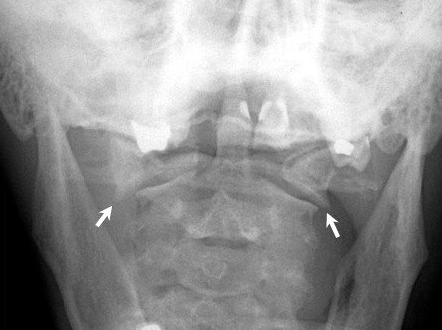

Future studies will be needed to rigorously compare the accuracy and efficiency of navigated versus nonnavigated odontoid screw placement.ĪP = anterior-posterior EBL = estimated blood loss O-arm navigation PEG = percutaneous endoscopic gastrostomy cervical spine odontoid screw fixation. Their surgical experience suggests that O-arm-assisted odontoid screw fixation is a viable approach. CONCLUSIONS The authors provide a detailed step-by-step guide to the navigated placement of an odontoid screw. No patient reported a worsening of symptoms at follow-up (mean duration 9 months). Odontoid Fractures The treatment of odontoid fractures has long been a topic of debate. One patient from each group had radiographic nonunion.

There was no difference in blood loss or operative time with or without navigation. Partial vocal cord paralysis occurred after surgery in one patient in whom no navigation was used. It is commonly associated with congenital fusion of C2 and C3. An acute neck hematoma and screw retraction, each requiring surgery, occurred in 2 patients in whom navigation was used. Atlantooccipital fusion is partial or complete fusion of the atlas and base of the occiput. Most patients presented with neck pain without a neurological deficit after a fall. (The skull sits on top of the atlas.) The dens projects into a central space in the. (The axis is the 2nd highest spinal bone.) The atlas is the first bone of your neck it sits on top of the axis. RESULTS Ten patients (three female mean age 61) underwent odontoid screw placement. The odontoid process, also known as the dens, is an upward projectile of bone that arises from the front part of the center of the axis vertebra. Secondarily, the authors compared collected variables, including presenting symptoms, injury mechanism, surgical complications, blood loss, operative time, radiographically demonstrated nonunion rate, and clinical outcome at most recent follow-up, between navigated and nonnavigated cases. Fractures of the odontoid peg of the cervical spine Introduction Management of odontoid fractures has been recognised as a challenge since the first description of these injuries in the early 20th century 1. The atlas rotates around the odontoid process to provide the single largest component of lateral rotation of the cervical spine. A standardized protocol for navigated odontoid screw placement was generated from the collective experience at the authors' institution. Patients were identified from a prospectively collected institutional database of patients who had suffered spine trauma. METHODS The authors retrospectively reviewed all cases of anterior odontoid screw fixation for Type II fractures at an academic medical center between 20. The authors present in a stepwise fashion the technique of odontoid screw placement using the Medtronic O-arm navigation system and describe their initial institutional experience with this surgical approach. 3D image guidance can improve the safety of posterior cervical hardware placement, but few studies have explored its utility in anterior approaches. OBJECTIVE As odontoid process fractures become increasingly common in the aging population, a technical understanding of treatment approaches is critical.


 0 kommentar(er)
0 kommentar(er)
